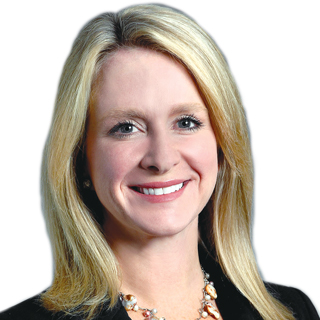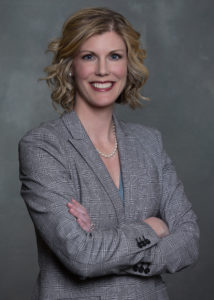
COVID-19 hit Holyoke Soldiers’ Home last March, when most of us were just learning the term “social distancing” and had no awareness of asymptomatic positives. While the global medical community grappled with the pandemic, it raged through Soldiers’ Home and killed 76 veterans; 84 others tested positive and recovered.
As elected officials scrambled for solutions and, sometimes, scapegoats, the governor of Massachusetts ordered an investigation into the causes of the outbreak. Other state and federal agencies launched their own investigations.
These probes showed there was no failure to report or attempt to conceal the COVID-19 cases or deaths from authorities. Given the catastrophic consequences of the outbreak, however, the home’s leadership team became the focus of scrutiny.
Whether a long-term care provider does everything right or makes missteps during this pandemic, any home with a deadly COVID-19 outbreak becomes a tragic, war-like scene of suffering. At Soldiers’ Home, the body bags were insufficient to keep up with the dozens dying.
A central focus of investigations was the staff’s decision to consolidate 40 residents from two locked dementia units into one, when some were showing symptoms and some were not.
Nursing home leaders argue they were forced to do so because they did not have enough care staff to cover two units. Chief Nursing Officer Vanessa Lauziere made the recommendation to consolidate, and Superintendent Bennett Walsh approved. Medical Director David Clinton was present for the consolidation but disavowed knowledge of it.
The attorney leading an independent investigation, Mark Pearlstein, was asked to determine (1) the causes and contributing factors of the outbreak; (2) whether the Soldiers’ Home leadership complied with applicable reporting requirements; and (3) what, if anything, could be done to prevent or reduce the likelihood of a similar outcome in the future.
The investigators roundly rejected the claim that the dementia-unit combination was unavoidable, as facility leaders could have — and later did — send patients out to different hospitals and skilled nursing facilities.
Failing to follow guidelines
Soldiers’ Home also failed to follow state and federal guidelines that required isolation of confirmed and suspected COVID-19 patients. Although several residents suspected of COVID-19 were tested between March 17 and March 20, they were never separated from asymptomatic residents while awaiting test results. They were allowed to remain in their units even after testing positive.
Although the Soldiers’ Home created isolation rooms, these rooms were never used. The justifications offered for not isolating residents (inadequate staff to cover the isolation unit and futility) were rejected, as investigators determined the Soldiers’ Home could have – but did not – request more staff until much later. Isolation could have slowed the transmittal rate within the dementia units, even though the first few COVID-19 positive residents were not timely isolated.

The investigation concluded that Soldiers’ Home’s delay in closing communal areas was also “inexcusably slow” and further contributed to the spread of COVID-19. Another alleged error that created a “substantial and obvious transmission risk” was the failure to prevent floating of staff members between units. Several “floaters” later tested positive for COVID-19.
Investigators found the Soldiers’ Home also ignored infection control guidelines regarding personal protective equipment. The facility not only neglected to institute a consistent and compliant PPE policy and practice, it limited access to PPE due to concerns of pilfering. In one instance, it disciplined a staff member for using PPE. The investigation concluded that PPE protocol was at least partially responsible for the 80 or so staff members who ultimately tested positive for COVID-19.
The findings put much of the blame on Walsh, a political appointee and, according to the investigation, a polarizing figure with a history of poor performance who was unqualified to run the Soldiers’ Home. His staff made the wrong clinical decisions, and he failed in his duty to oversee them. He lacked the clinical and administrative skills needed to supervise his leadership team because he had no background in healthcare and was not a licensed nursing home administrator. Neither was required by Massachusetts law.
Walsh’s shortcomings notwithstanding, the investigation did not uncover any material violations of the COVID-19 reporting requirements. That said, Walsh did apparently omit key information and relayed inaccurate information in his communications with the department of Public Health and Veterans’ Services.
The “evolving reporting requirements” did not help matters. Early on, only confirmed COVID-19 cases were required to be included in certain death tolls; Soldiers’ Home was not required to include individuals awaiting test results at the time of death in early reports. As a result, the Massachusetts Executive Office of Health and Human Services did not have an accurate picture of the COVID-19 crisis rapidly unfolding at the home until several weeks into the crisis.
Criticism, followed by charges
The Massachusetts State Attorney General’s Office investigation determined the decision to combine the two dementia units was not just reckless; it was criminal. The AG’s Office said infection control failures were the responsibility of Walsh and Clinton, both of whom were charged with five counts of criminal neglect, specifically being a “Caretaker Who Wantonly or Recklessly Commits or Permits Bodily Injury to an Elder or Disabled Person,” and five counts each of being a “Caretaker Who Wantonly or Recklessly Commits or Permits Abuse, Neglect, or Mistreatment to an Elder or Disabled Person.”
The AG’s Office did not charge Lauziere, instead offering the nurse immunity in exchange for testimony.
As we search for lessons learned amidst this tragedy, the following suggestions put caregiving teams in the best possible position to avoid a criminal investigation and to defend decisions if necessary.
First, it is no secret that proper documentation is critical. Memories fade, and each witness’ truth may look quite different, but contemporaneous documentation is steadfast, and often, life-saving. Here are some critical items to document:
● The response team
● The response plan
● Screening procedures
● Visitor policy
● Medical director and primary care physician notification
● Family and staff communication
● Daily staff screening
Second, while it is imperative for facilities to ensure internal processes are well documented (particularly as they evolve), it is equally important to document specific guidance from federal, state and local health officials that informs these processes. Contemporaneous documentation brings those critical pieces of information into laser-sharp focus and could be the difference between non-prosecution and indictment.
Lastly, if a facility finds itself in the crosshairs of a federal or state investigation, it is never too early to ask outside counsel for assistance. An experienced attorney can help a facility respond to subpoenas or other records requests, coordinate employee interviews (and, if appropriate, recommend separate counsel for employees under scrutiny), and communicate with law enforcement or other officials while your facility focuses on providing – and documenting – quality care.
Christy Tosh Crider is chair of Baker Donelson’s Health Care Litigation Group and the Women’s Initiative. She also founded the firm’s long-term care team and served as the leader for more than a decade. Christy concentrates her practice in healthcare litigation, managing litigation for facilities around the country and serving as outside general counsel.
As a former prosecutor, Joy Boyd Longnecker, a Baker Donelson shareholder, is often called upon to advise and defend clients in matters involving potential criminal and/or civil liability. She has significant first- and second-chair trial experience; to date, she has successfully tried more than 40 cases. She is co-chair for the Tennessee/Alabama Chapter of the Women’s White Collar Defense Association.





